contact me
Hi! I'm Lindsay Ferrier. You might remember me from a blog called Suburban Turmoil. Well, a lot has changed since I started that blog in 2005. My kids grew up, I got a divorce, and I finally left the suburbs for the heart of Nashville, where I feel like I truly belong. I have no idea what the future will hold and you know what? I'm okay with that. Thrilled, actually. It was time for something totally different.
Your Complete Guide to the Best Stops on the Natchez Trace Parkway: Part 1
September 19, 2016
Who doesn’t love a road less traveled… one lined with trees and wildflower-filled meadows instead of strip malls and billboards? We’re lucky to live right next to a 450-mile long road that fits that description and runs from Nashville all the way to Natchez, Mississippi. It’s called the Natchez Trace Parkway and it’s a federally protected linear park that includes Indian mounds, historic villages, hiking trails, waterfalls, and even the site of a 200-year-old murder mystery. Read on and I’ll tell you all about it!
The Natchez Trace Parkway was created to loosely follow the original Natchez Trace, a path first traveled by prehistoric animals, then Indians, European explorers, and finally American pioneers — By the early 1800s, it was a major thoroughfare for goods headed to and from the Mississippi River. Once the steamboat came on the scene, traffic slowed substantially on the Natchez Trace and the road eventually succumbed to nature. The National Park Service acquired the property in 1938, but it wasn’t until 2005 that the final stretch of parkway was paved.
Today, the Natchez Trace Parkway is a winding, two-lane road full of natural beauty. Cyclists are encouraged to ride here and are allowed to take over the full lane if they choose (although they’ll generally move to the side if you’re behind them). Speeding on the parkway is strictly prohibited — This is a road for soaking up your surroundings, not getting from point A to point B as quickly as possible.
We’re lucky to live about a mile from the Trace and the more we travel it, the more we discover. I’ve been wanting to share it with all of you, and that’s why I’ve written not one but two posts detailing all the Trace has to offer. Over at Style Blueprint, check out my overview the 15 must-see stops along the entire Natchez Trace Parkway. And here at home, I’m going a little more in-depth and detailing some of the lesser-known stops that are still worth seeing. Whether you spend a couple of hours on the trace or several days, there’s plenty to see, starting with the northern entrance/exit, right here in Nashville:
Northern Terminus (milepost 442.1)
If you’re starting your Natchez Trace Parkway journey in Nashville, you can find the Northern Terminus entrance off of Hwy. 100, on the western edge of Nashville. (Check out Style Blueprint to find out which legendary Nashville restaurant is just a few hundred yards from the Trace’s entrance!) If you’re taking I-40 west toward Memphis, get off on the McCrory Lane exit (exit 192) and turn left. Drive four miles until McCrory Lane dead-ends at a stoplight at Highway 100. Turn right and then take an immediate right onto the entrance ramp of the Natchez Trace Parkway. There’s not much signage, so you’ll need to pay close attention. The moment you start your journey on the Parkway, you’ll leave civilization behind and find yourself on rolling hills, surrounded by forest. Expect to see lots of wildlife, and watch out for deer– They’re everywhere.
Double Arch Bridge (milepost 438)
Within a few minutes of starting your journey from Nashville, you’ll cross over one of the most iconic images on the parkway– the often-photographed Double Arch Bridge. This bridge, which received the 1995 Presidential Award for Design Excellence, offers a 155-foot-tall view of a lush, green valley with rolling hills. You can stop at the Birdsong Hollow parking area for a view of the bridge and valley before you cross it or drive to the other side and take the Highway 96 exit down to the bottom of the bridge for a view from below. Both views are worth a stop for pictures.
Check out Style Blueprint for a charming detour just beyond the Double Arch Bridge, with great shopping, restaurants and accomodations!
Timberland Park (milepost 437.2)
Just beyond the Double Arch Bridge is Timberland Park, a fantastic and still little-known spot for a hike . Stop by the park’s cozy interpretive center before you start your hike to borrow a handmade walking stick and grab a map. So far, 3 1/2 miles of woodland trails in this new park have been cleared, with more on the way.
Gordon House (milepost 407.7)
This historic house belonged to ferry operator John Gordon in the early 1800s and it’s one of the few buildings connected with the Old Trace that are still standing. The house is locked up, but you can take a 10-minute walk from the site that leads to a section of the original Natchez Trace and the Duck River ferry site, which was in operation until a bridge was finally built at the end of the 1800s.
At milepost 405.1, you’ll find a popular overlook and waterfall. Read all about it at Style Blueprint.
Old Trace Drive at the Tobacco Barn (milepost 401.4)
The historic tobacco barn will help you find this two-mile, one-way drive along the actual Old Trace trail. You’ll see some beautiful views of the valley and get a taste of what it felt like to travel the Old Trace on this bumpy dirt road, which makes for a fun and adventurous detour– Our kids loved it. The Old Trace rejoins the parkway at the end.
Sheboss Stand (milepost 400.2)
No need to stop here since nothing’s still standing, but your kids will love hearing the story behind the name. Back in the early 1800s, the Chickasaw Indians controlled this part of the Old Trace. They allowed inns or ‘stands’ to be built at one day intervals, as long as an Indian ran the stand. Somewhere near this spot, the widow Cranfield and her Indian second husband ran the stand. When travelers asked her husband questions, he’d merely point to his wife and say, “She boss.” And there you go.
Fall Hollow (milepost 391.9)
Next up comes one of my favorite stops on the Trace: Fall Hollow. The farther you venture on this short, steep trail, the more waterfalls and cascades you’ll see. Just a little over an hour’s drive from Nashville, Fall Hollow is truly a magical place– so magical, in fact, that I wrote an entire post about it! Check it out here.
Meriwether Lewis Death and Burial Site (milepost 385.9)
The ruins of the Grinder House, an inn on the Old Trace where famed explorer and statesman Meriwether Lewis lost his life, are at this site, along with Lewis’s grave. Be sure and read up on the mysterious circumstances of Lewis’s death before you arrive — It’s a dark mystery historians are still trying to solve.
You’ll also find a 4.3 mile hiking trail here, called the Meriwether Lewis Loop. Unless you’re an adventurous hiker who doesn’t mind lots of underbrush and the distinct possibility of getting lost, you might want to skip this one. (Yes, we speak from experience!)
Metal Ford & Buffalo River (milepost 382.8)
Take a short, scenic walk back in time to this landmark spot where settlers ‘forded,’ or crossed, the Buffalo River. It’s called Metal Ford because the river’s rocky surface reminded early travelers of their stone “metaled” roads. Continue on the short trail along the river to the McLish stand exhibit and see the remains of the site of an 1820 furnace once used to manufacture pig iron.
Old Trace Drive (milepost 375.8)
This 2 1/2 mile drive gives you another opportunity to leave the parkway and ride along the Old Trace. This particular stretch includes some beautiful views and is a favorite with Parkway visitors.
DETOUR: The Dragonfly- an Emporium (milepost 370)
Just off the Parkway exit at milepost 355, you’ll find The Dragonfly, a popular place to stop in Collinwood, Tennessee for coffee or tea and a sweet treat. While you’re there, shop for arts and crafts, antiques and fun gifts.
Glenrock Branch (milepost 364.5)
Here, a short walk will take you down to a lovely creek and limestone bluff. This shady spot is a favorite stop for picnickers., and it may be the perfect place to enjoy your coffee and brownies from The Dragonfly.
DETOUR (milepost 338): Just a few yards off the parkway is a stone wall so inspiring, it was the subject of a feature in the New York Times! Get the lowdown over at Style Blueprint!
Rock Spring (milepost 330.2)
Stop here and take this half-mile loop trail, a favorite with bird watchers, to see a natural spring bubbling from the ground. On your way, you’ll cross a creek on a set of fun stepping stones, as well as a series of abandoned beaver dams. According to my sources, these waters are also home to the hellbender, a rarely-seen salamander that’s the largest in North America.
Colbert’s Ferry (milepost 327.3)
Cross the .8 mile John Coffee Memorial Bridge over the Tennessee River and you’ll find Colbert’s Ferry, the site where George Colbert owned an inn between 1800 and 1819 and ferried travelers over the river. The real reason we remember George Colbert, though, is that he charged $75,000 to transport Andrew Jackson and his army across the river!
Today, you can have a meal at one of the picnic tables here without being charged a dime. Then take a 20-minute stroll on a walking portion of the Old Trace, which will take you to a scenic bluff overlook and back.
DETOUR (milepost 320): You’re now crossing through a part of Alabama known as The Shoals, where you’ll find a funky little town that’s definitely worth stopping for! Head over to Style Blueprint for more information on Tuscumbia, Alabama!
Cave Spring (milepost 308.9)
Cave lovers in your group will definitely want to stop at Cave Spring on the parkway. Here, a short, paved path leads to a collapsed cave that’s believed to have once been used by Native Americans for ceremonies, shelter, and fresh water. Today, the cave is dangerous and the water is definitely not safe for drinking. There’s a deep pool of water just a few dozen feet inside the cave’s entrance — Bring a flashlight and check it out from the entrance.
Tishomingo State Park (milepost 304)
The parkway runs right through Tishomingo State Park, but it’s worth getting off at milepost 304 and spending some time here. Archaeologists have discovered human activity on these lands as far back as 7,000 B.C. Today, the park includes 13 miles of trails with waterfalls, scenic views of 60 foot sandstone cliffs, and a swinging bridge built in the 1930s. Or you might opt instead for the park’s 6.25 mile canoe float trip, which runs between mid-April and mid-October. Tishomingo is a great stayover option on the Parkway, with primitive camping sites as well as RV hookups, fully outfitted cabins, and a cottage.
Pharr Mounds (milepost 286.7)
Here, you’ll find the largest and most important archaeological site in northern Mississippi. It consists of eight American Indian burial mounds, all constructed between 1 and 200 A.D. Together, they make up one of the largest Middle Woodland ceremonial sites in the southeast. When four of the mounds were excavated in 1966, artifacts made with copper, galena, mica and greenstone were discovered. These minerals weren’t found in the area and had to have been acquired through vast Native American trade networks.
Confederate Gravesites and Old Trace (milepost 269.4)
A short walk on the Old Trace here takes you to the gravesites of 13 unknown Confederate soldiers. How they died is unknown– It could have been a skirmish or illness– but it’s believed that soldiers marching through north Mississippi stopped here to bury their dead before continuing on.
At milepost 266, you’ll find answers to everything you ever wanted to know about the Trace! Then at milepost 259.7, a DETOUR will take you to a city just off the parkway you won’t want to miss! Once you get back on the Trace, you’ll come upon a site at milepost 233.2 where paranormal activity has (allegedly!) taken place for hundreds of years! Details on all these stops can be found over at Style Blueprint.
Blackland Prairie Trail (mileposts 266, 263.9, 261.9, 260)
This six-mile walking trail starts at the Tupelo Visitor Center (milepost 266) and crosses two historic sites along the Trace: Old Town Overlook (milepost 263.9) and Chickasaw Village (milepost 261.8). It then ends at the West Jackson Street Trailhead (milepost 260). Each of these sites is also accessible by car along the Trace, so you may opt to hike part of the trail or all of it– provided you can find a ride back to your car! A detailed map of the hiking trail can be found here and information about what you’ll see on the trail is here.
Bynum Mounds (milepost 232.4)
A Middle Woodland period Native American mound site. This archeological site consisted of six mounds, five of which were excavated in the 1940s. Two of the largest mounds have been restored, and you can see them today. The Village Site displays exhibits that portray daily life and early history at the Chickasaw Village that once stood here.
You’re halfway there! Check out the second part of this post to see many more must-see stops along the Natchez Trace Parkway!
Keep up with all our travels by following Suburban Turmoil on Facebook, Instagram, Twitter and Pinterest!
Header image via ScenicTrace.com. Head over there for even more information about the Natchez Trace Parkway!
Leave a Reply Cancel reply
This site uses Akismet to reduce spam. Learn how your comment data is processed.
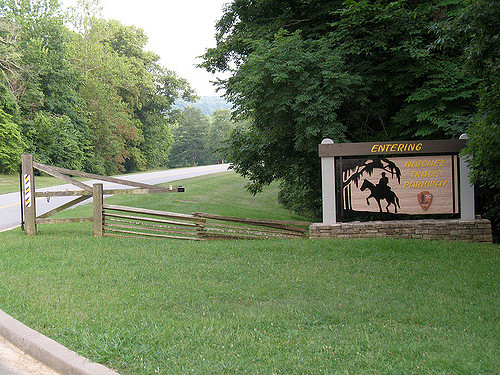

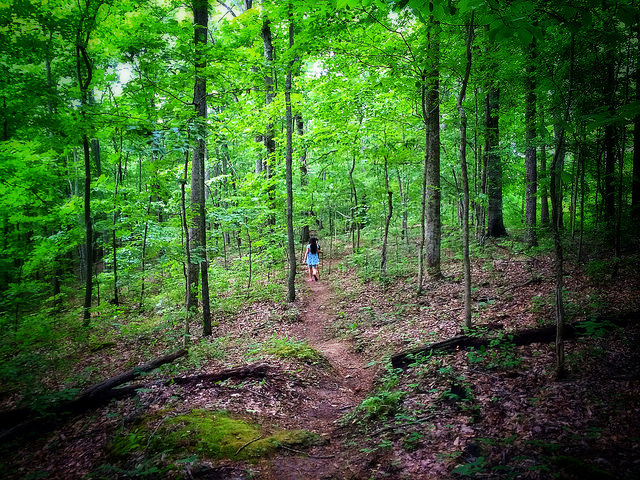
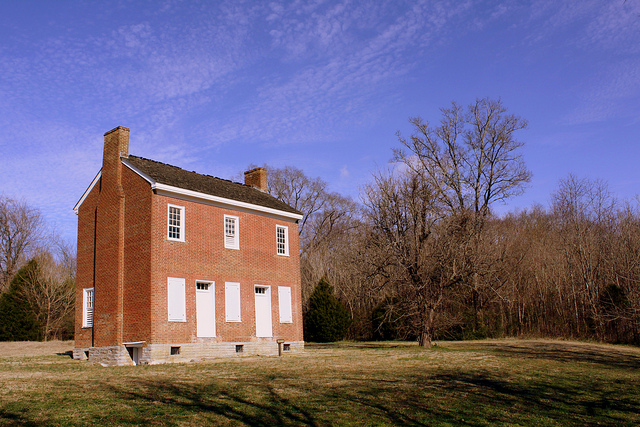
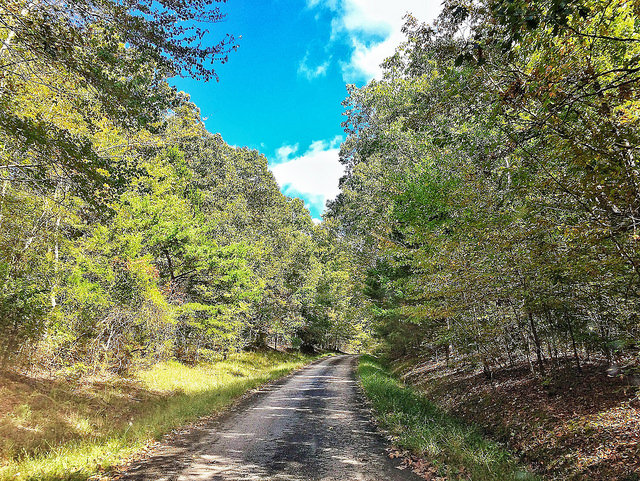
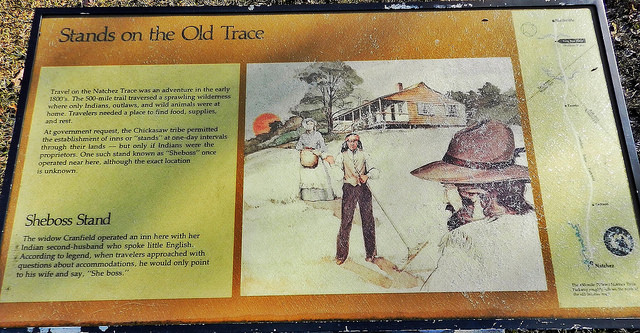
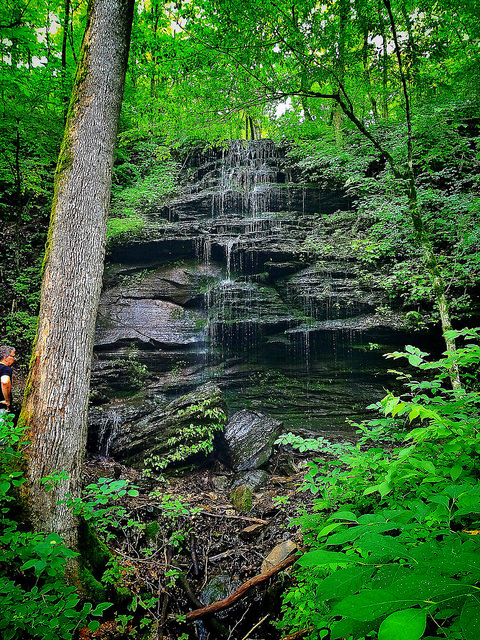
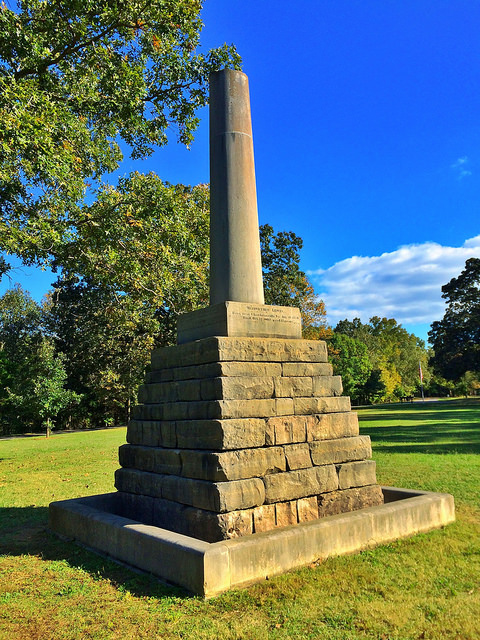
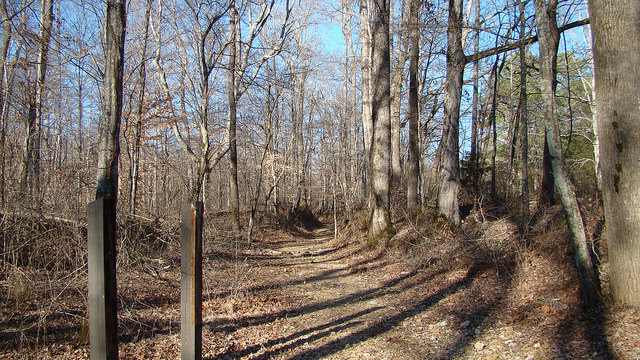
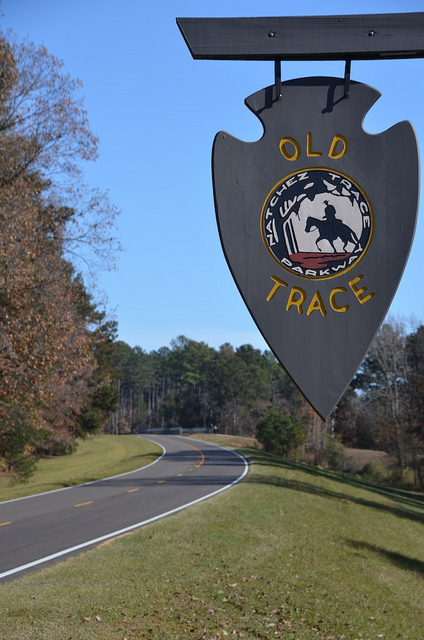

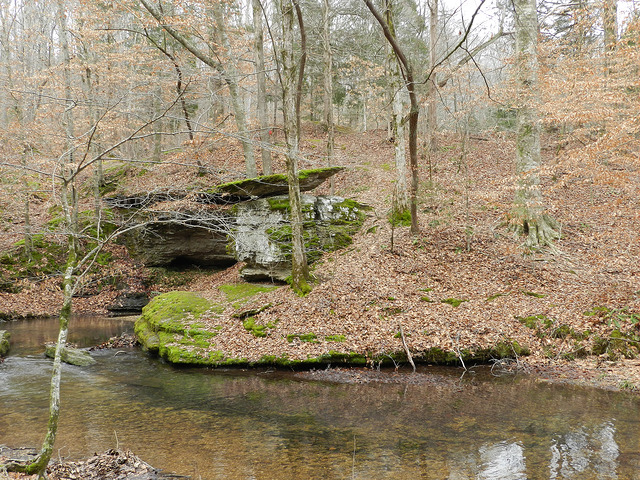
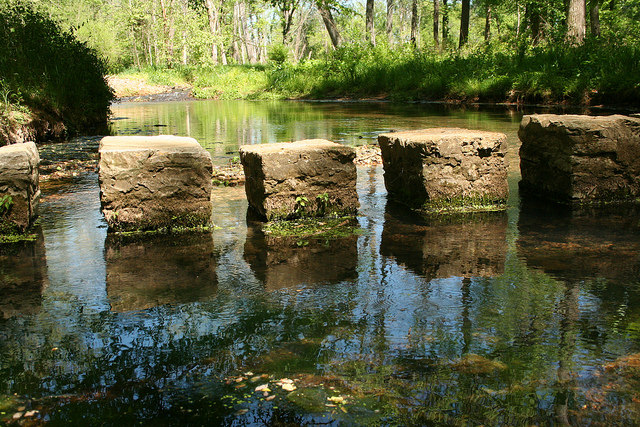
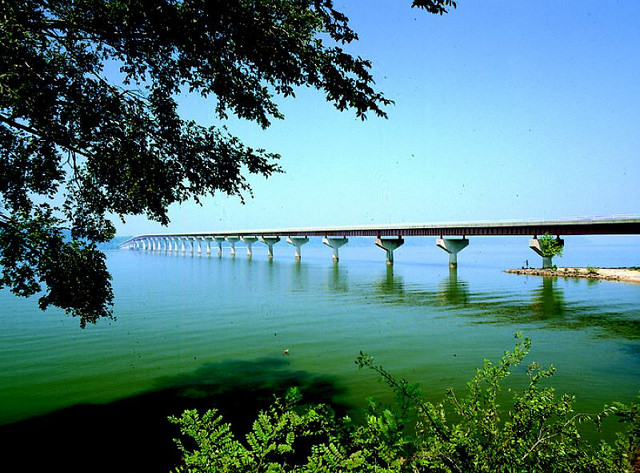
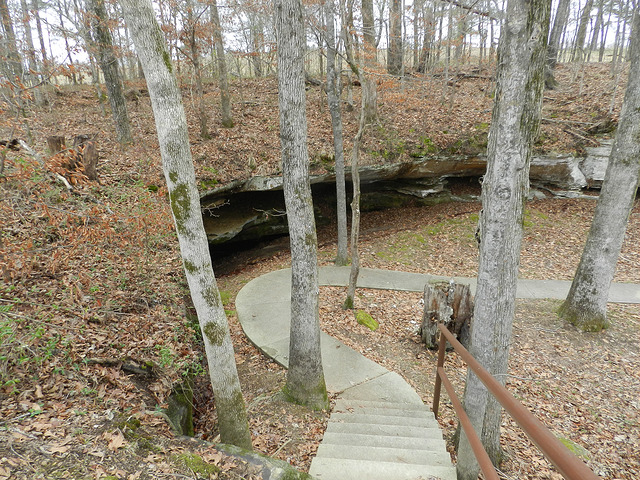
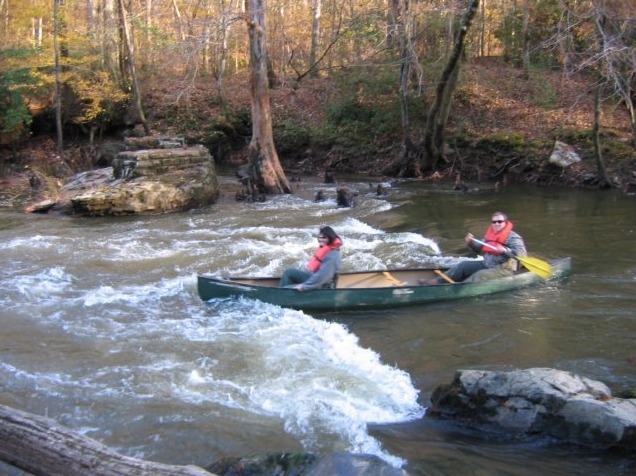
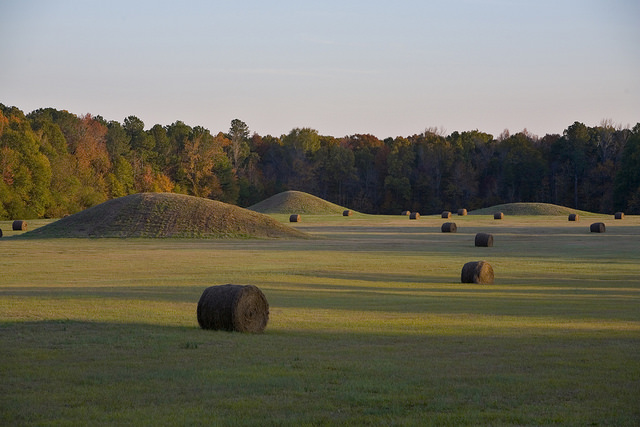
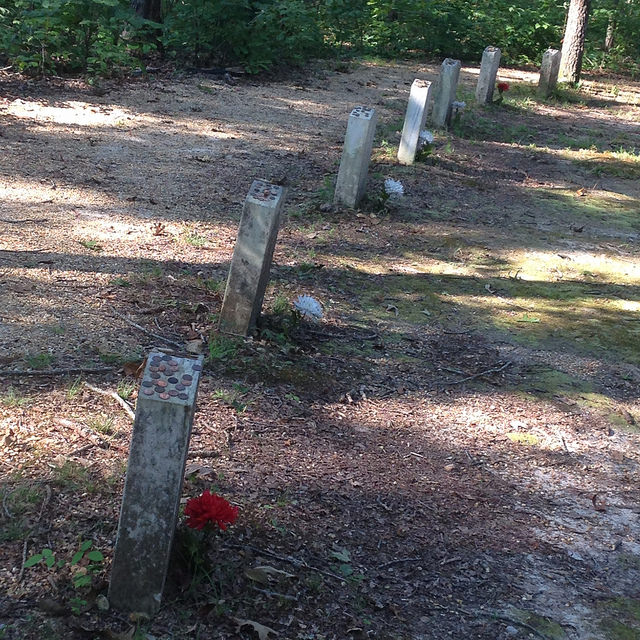
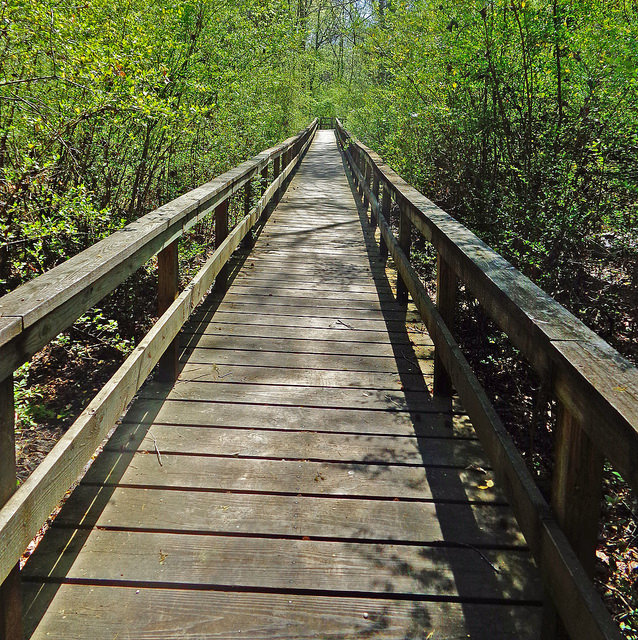
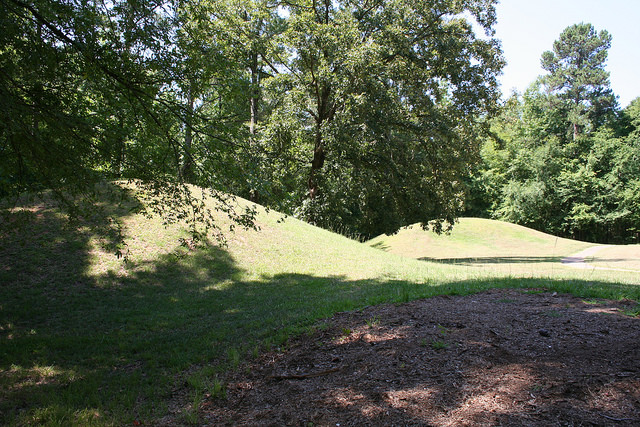
[…] 48. Spend a day on the Natchez Trace Parkway. There’s so much to see on the Natchez Trace Parkway, and much of it is an easy drive from Nashville. We’ve been as far as the Meriwether Lewis gravesite on our day trips, and encountered all kinds of interesting stops along the way. Since we live very close to the Parkway, I’ve done a LOT of research on it and recently wrote a guide to all of the places worth pulling over for. Check it out before you make the trip! […]
[…] Spend a day on the Natchez Trace Parkway. There’s so much to see on the Natchez Trace Parkway, and much of it is an easy drive from Nashville. We’ve been as far as the Meriwether Lewis gravesite on our day trips, and encountered all kinds of interesting stops along the way. Since we live very close to the Parkway, I’ve done a LOT of research on it and recently wrote a guide to all of the places worth pulling over for. Check it out before you make the trip! […]